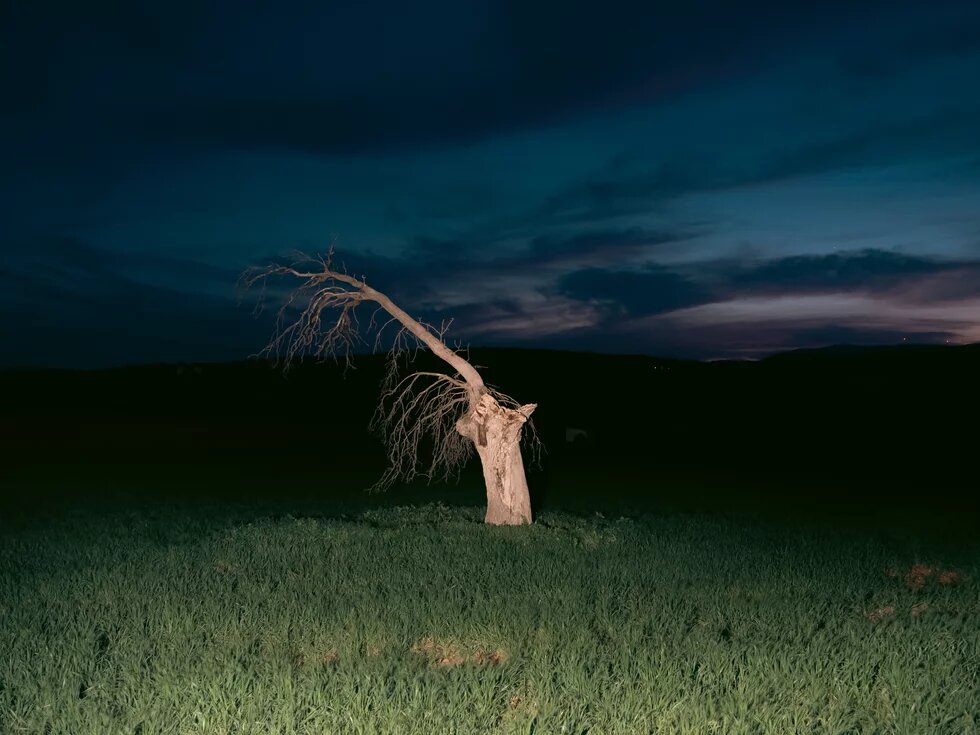
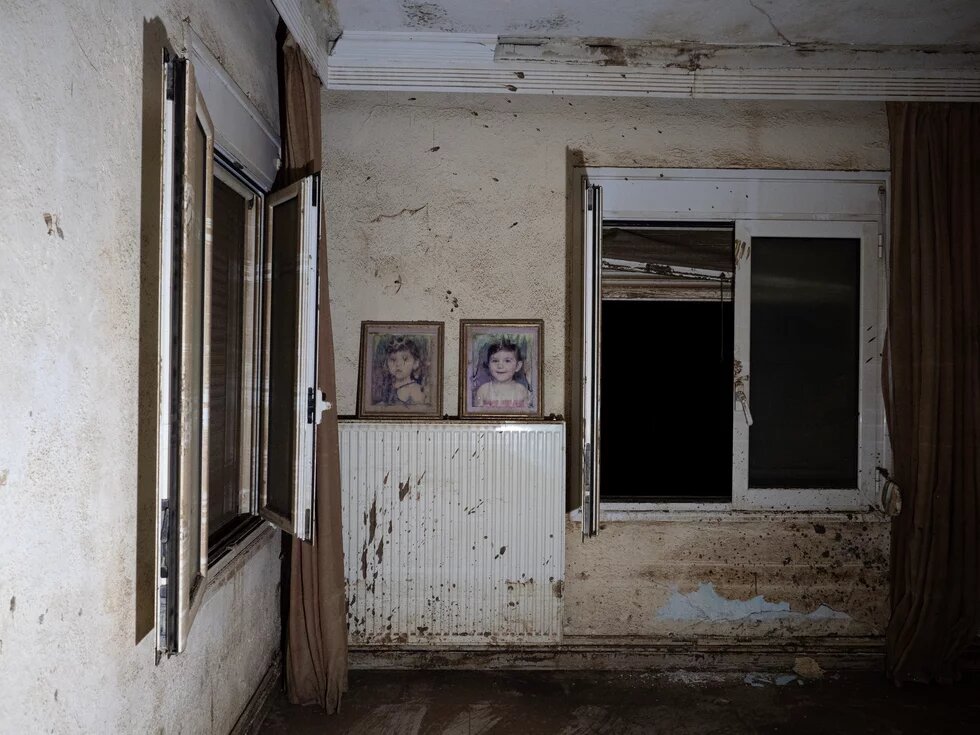
Text by Anja Troelenberg
Photos & Videos by Ilir Tsouko

| In the spring of 2024, we set out to document the aftermath of the devastating natural disasters that struck Greece in the summer of the previous year. We wanted to explore the relationship between humans and nature – how these forces intersect and shape one another. What we imagined would be a straightforward chronicle of destruction and recovery. What we found instead was a mosaic of resilience, fear, and hope – scenes that linger vividly in our memory. |

|
| Our journey began in a small village in Thessaly, in the middle of a humid night. The air was heavy, filled with the rhythmic dripping of water from a rusty tower, and the croaking of frogs echoed in the distance – a dystopian atmosphere that seemed to whisper of the flood that had submerged this place. |
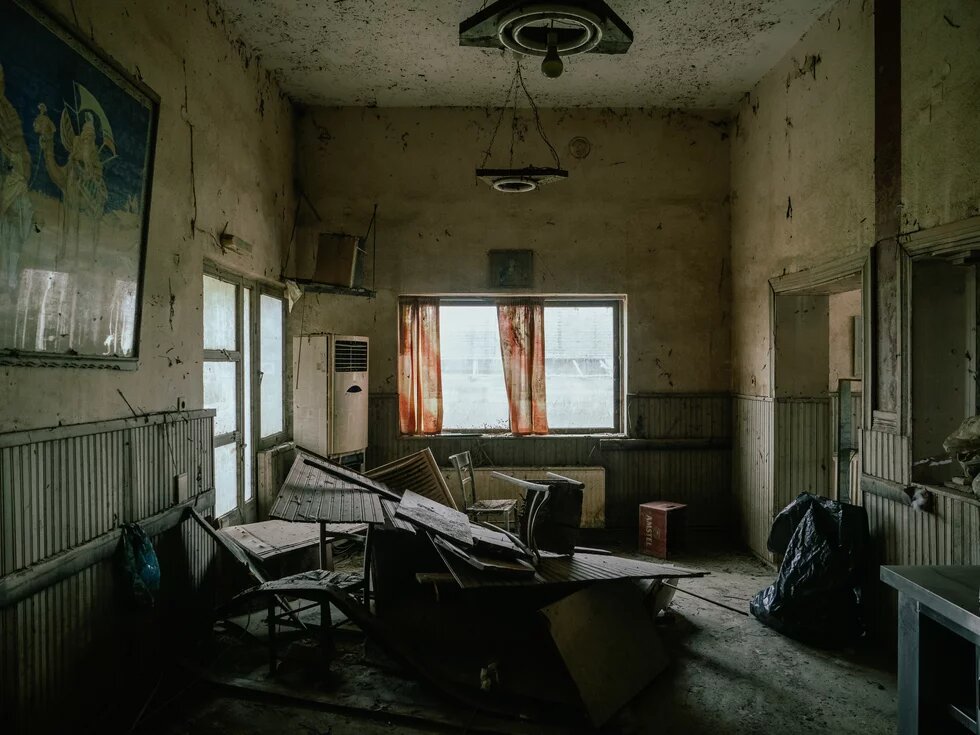
|
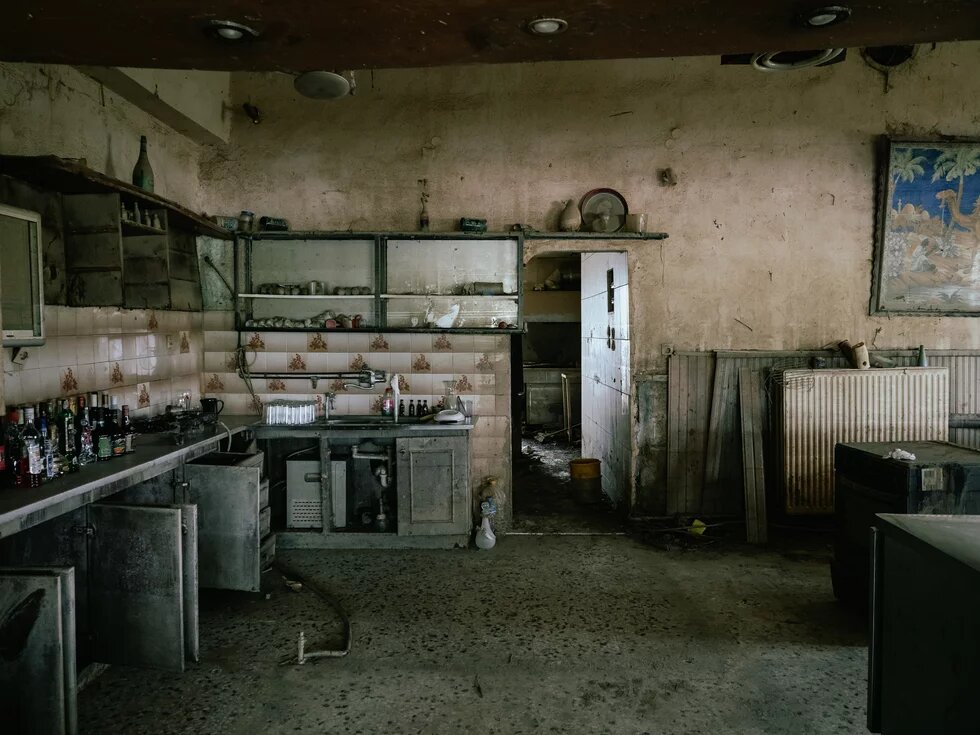
|
| A petite, warm-hearted woman welcomed us into the house that would be our accommodation for the night. To our surprise, the house was spotless: freshly painted walls, scrubbed floors, and the faint scent of cleaning detergent. There was no visible trace of the disaster. It made us wonder: how could we document a disaster when the damage was no longer visible? |

|

|
| The next day, in a nearby village, we attended a festival. Children danced in traditional clothing, their steps light against the backdrop of loud music blaring from oversized speakers. Bowls of steaming soup were handed out, and laughter bubbled up in conversation. I remember wondering whether this was a celebration of survival – or an attempt to reassemble a sense of normalcy. At the edge of the crowd, a mother stood, watching her children play. She spoke of how they now tense up at the sound of rain. “They are afraid every time it rains,” she said quietly. Her words stayed with us. The scars of the disaster were not visible on the surface, yet they lingered deeply, etched in the lives of those who had endured. |
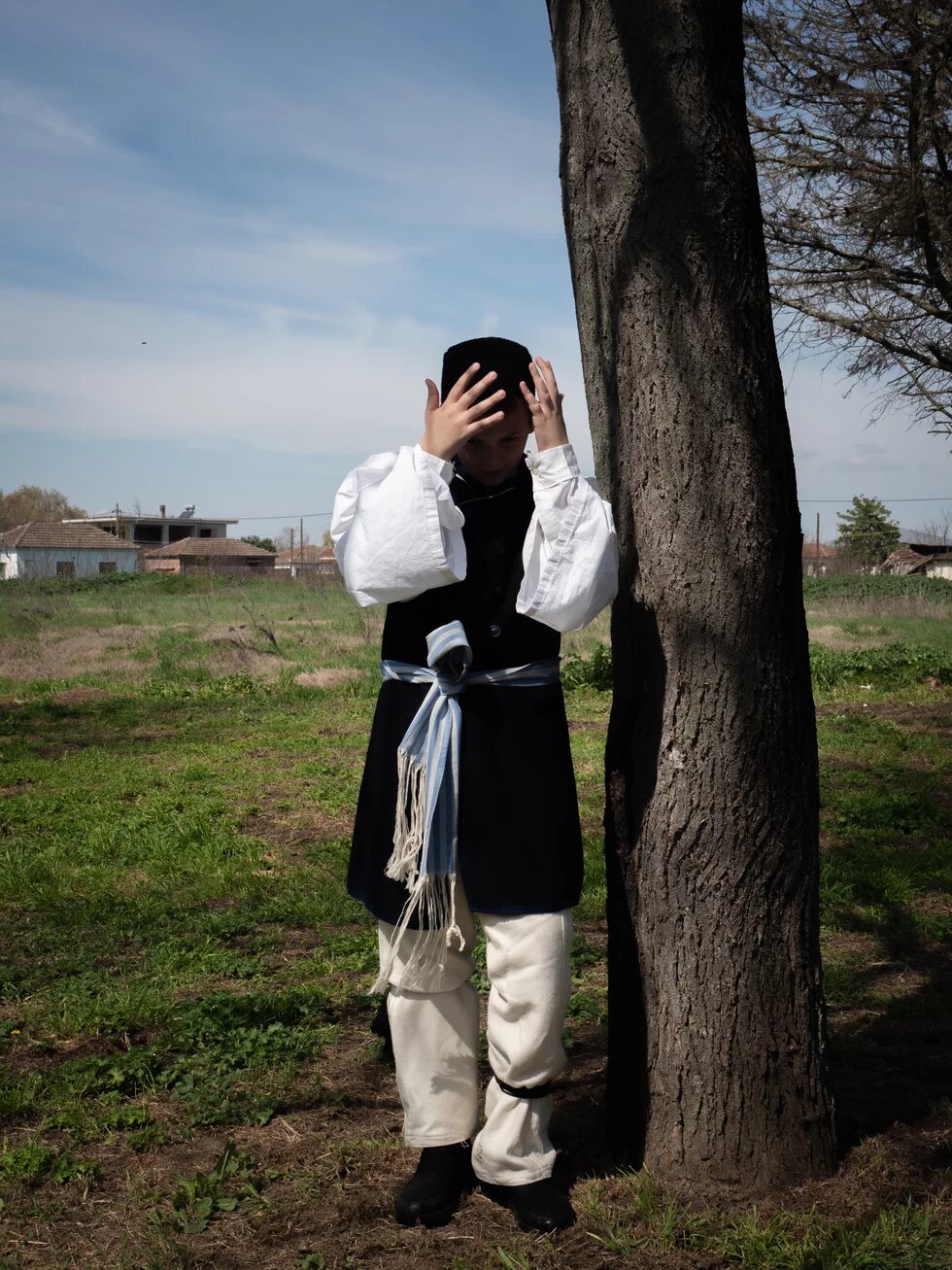
|
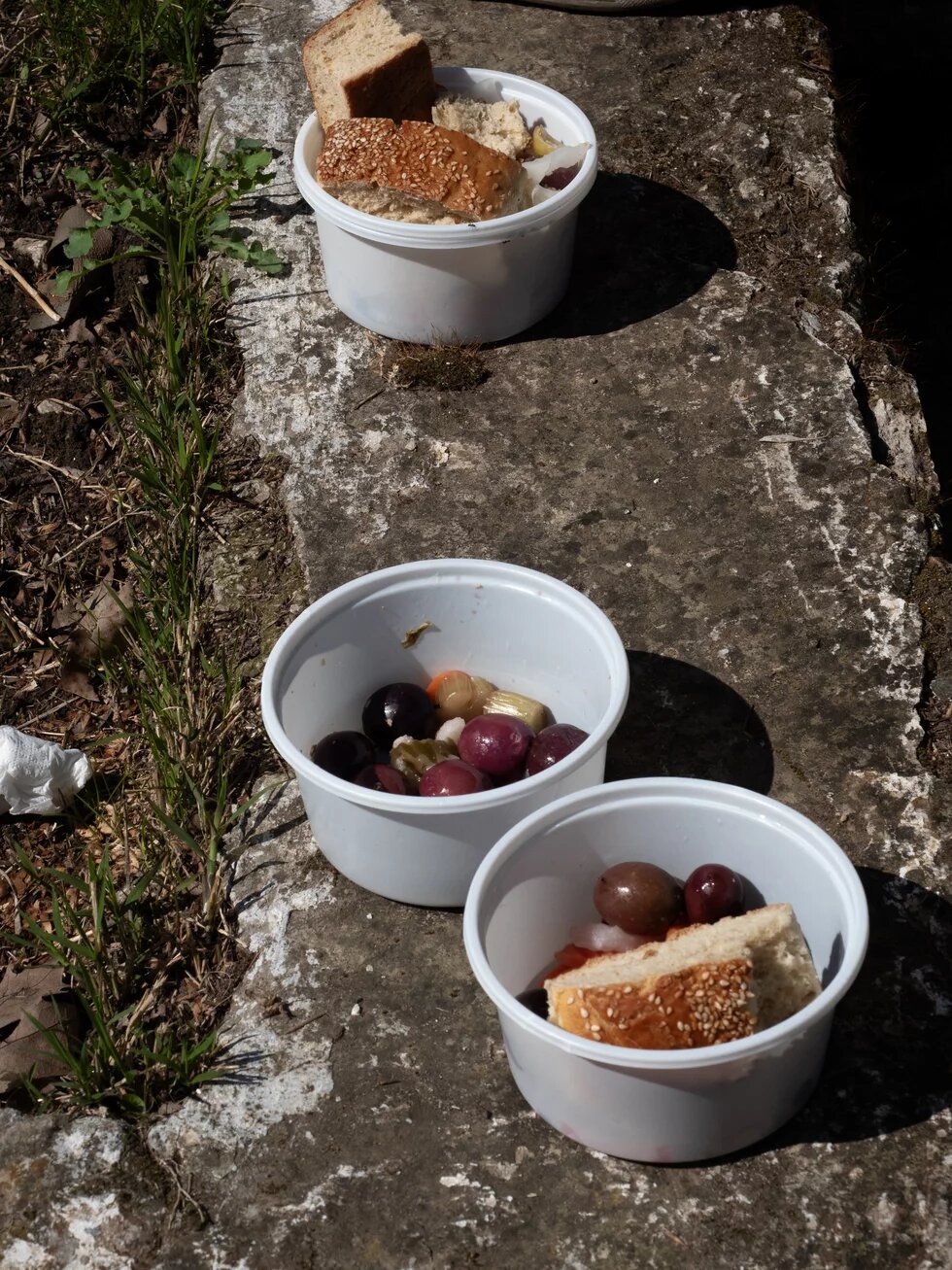
|
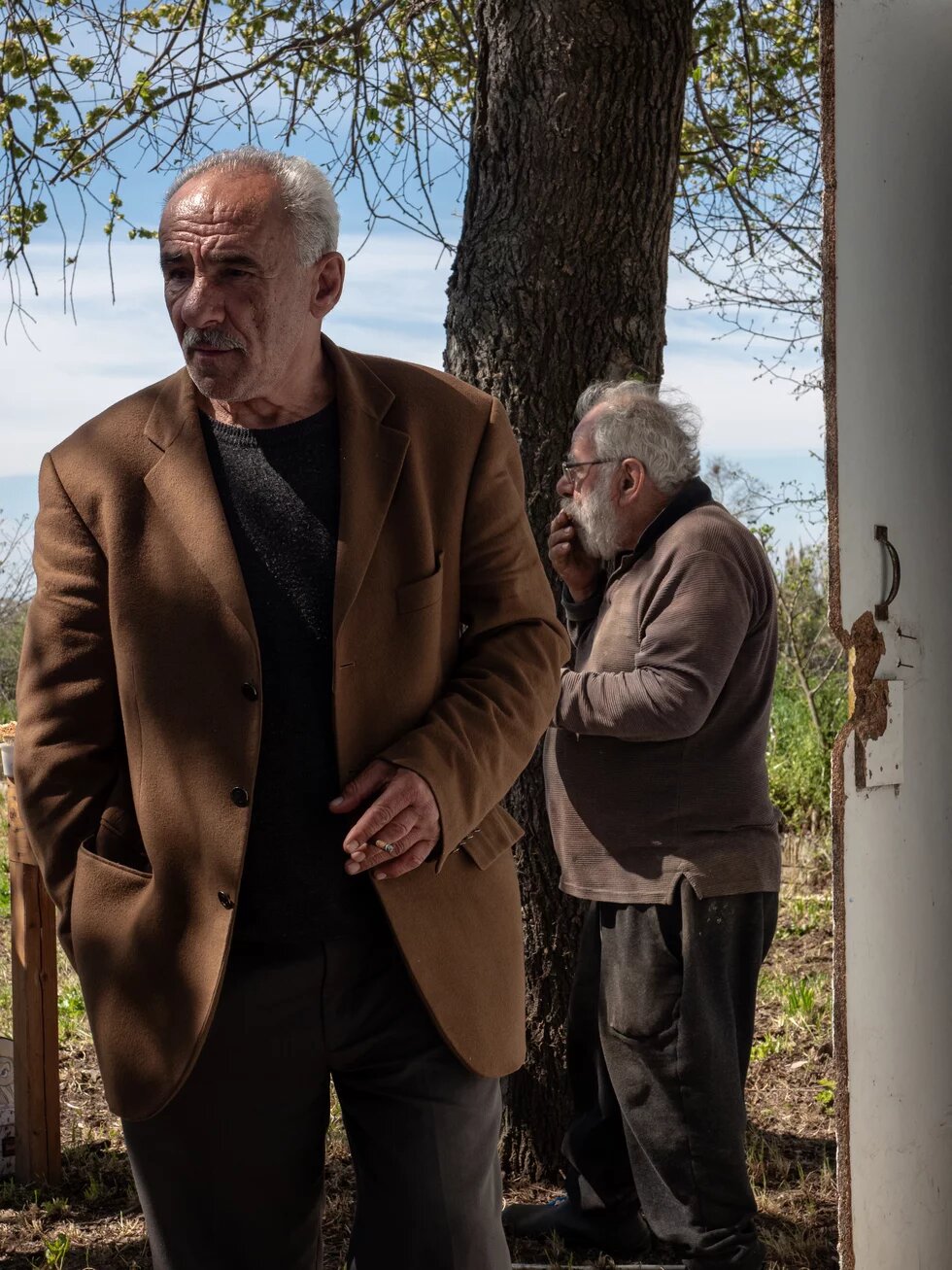
|
| In the flood-affected villages of Thessaly, we heard stories of remarkable solidarity. A sheep farmer had donned a wetsuit and braved the floods to rescue his neighbors. A captain tied himself to a hose and ventured into the raging waters to save lives. These acts of courage revealed an unexpected truth: the cruelty of nature often illuminates the profound capacity of humans for love and sacrifice. In these moments, communities come together, opening their doors to those in need. |
| One morning, while buying bread, we met a baker curious about our work. He told us how his apartment above the shop had become a refuge during the floods, sheltering neighbors from rising waters while his shop below was submerged. As he spoke, he added something we hadn’t considered: “It’s not just humans and nature,” he said. “There is a third element: God.” This triangle – humanity, nature, and God – reshaped our understanding. In the weeks that followed, his words brought to mind biblical stories: Noah’s Ark, the plagues of Egypt, Job’s trials. Disasters, we realized, are not unique to our time; they have shaped humanity throughout history, forcing us to confront our fragility and interdependence. |
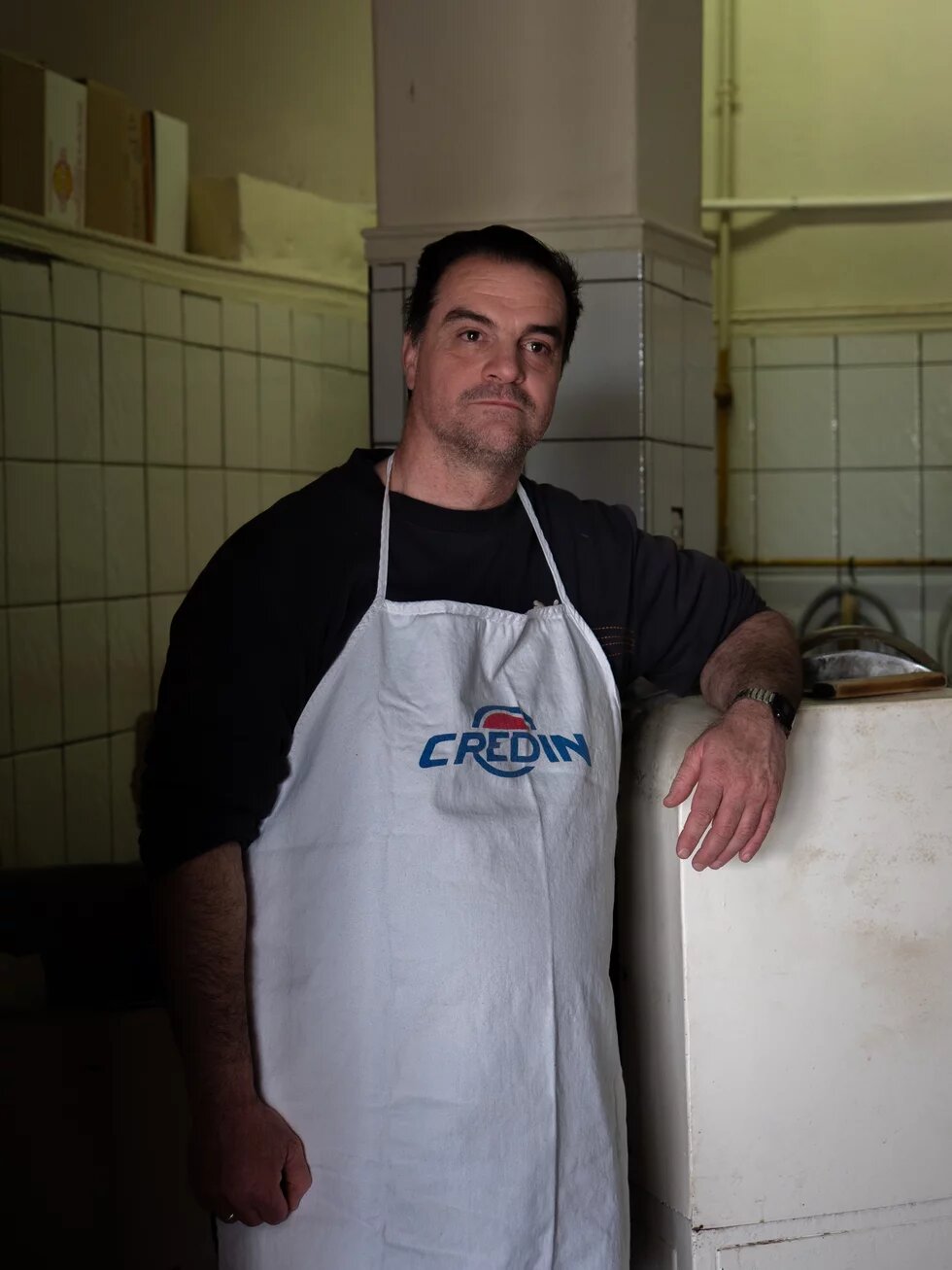
|
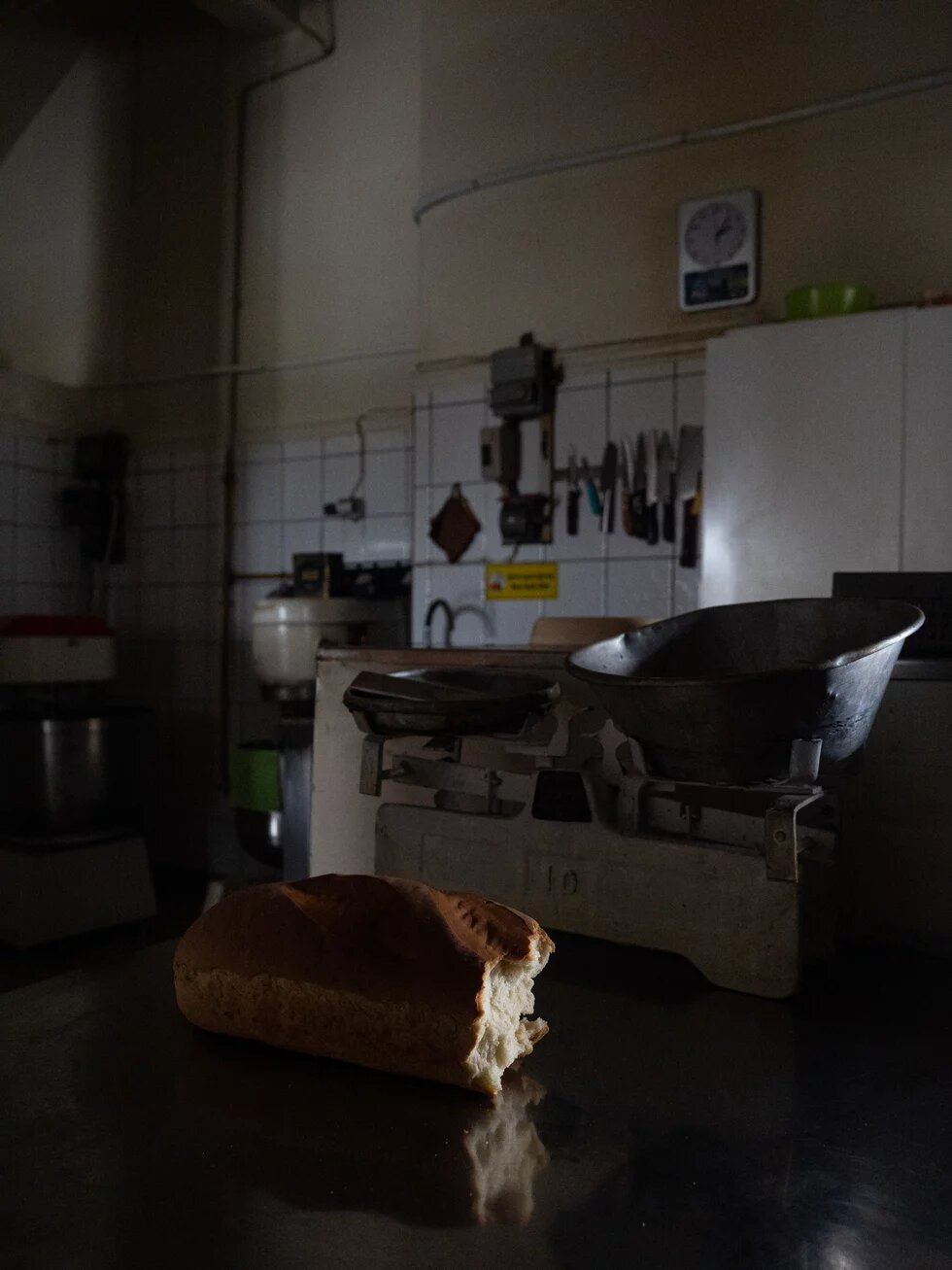
|
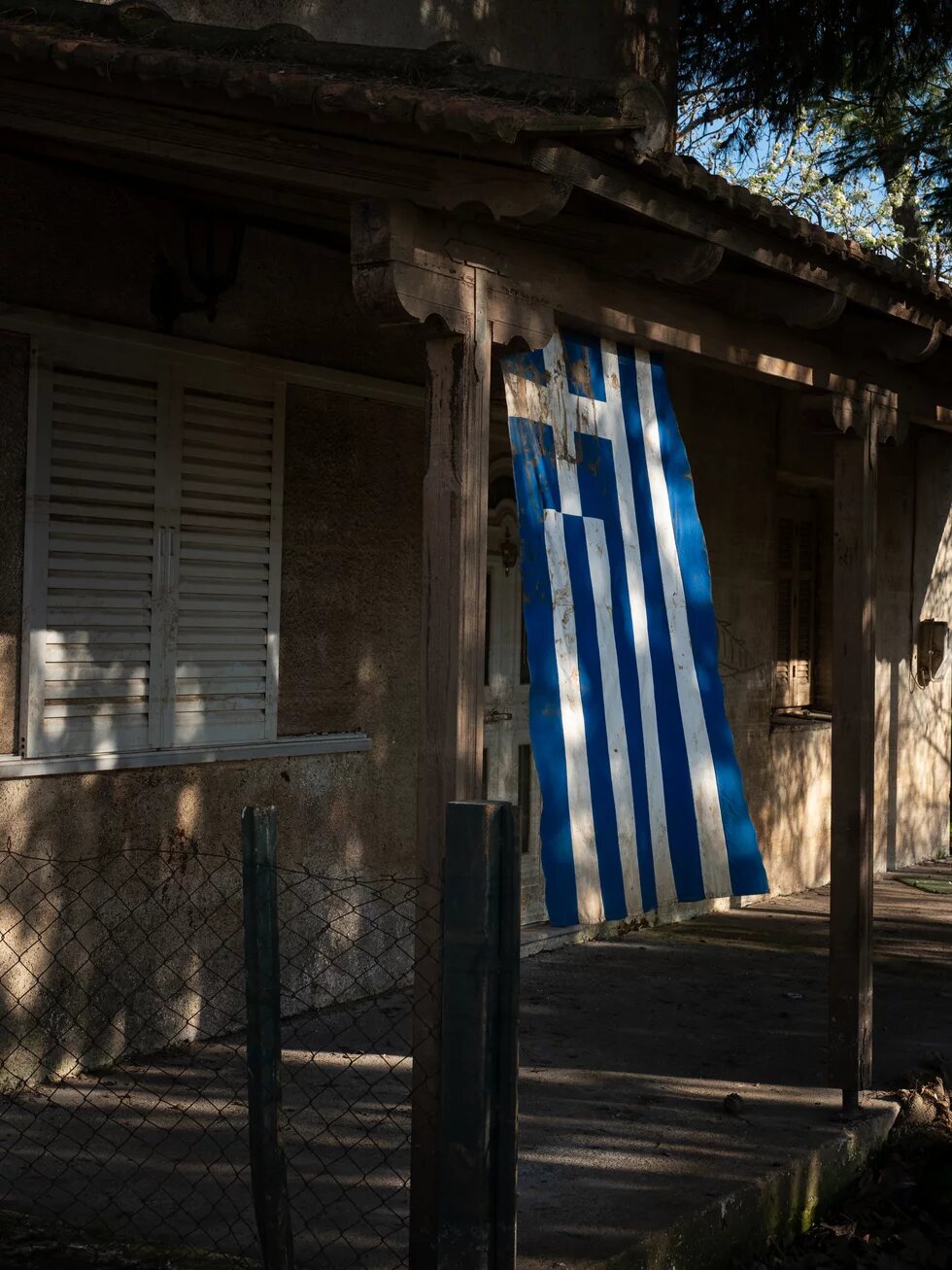
|
| We had begun this journey assuming the disaster was a singular event, an exception to the norm. It is likely human to see catastrophes as isolated incidents, a way of coping with their enormity while yearning for a return to normalcy. Yet in the face of climate change, the spaces between crises seem fleeting. The challenge is not just rebuilding after a disaster but living in the precarious moments between them. And so the question evolved: how can we capture the invisible threat – not just in our images as reporters, but in the way we prepare for and confront what is to come? |
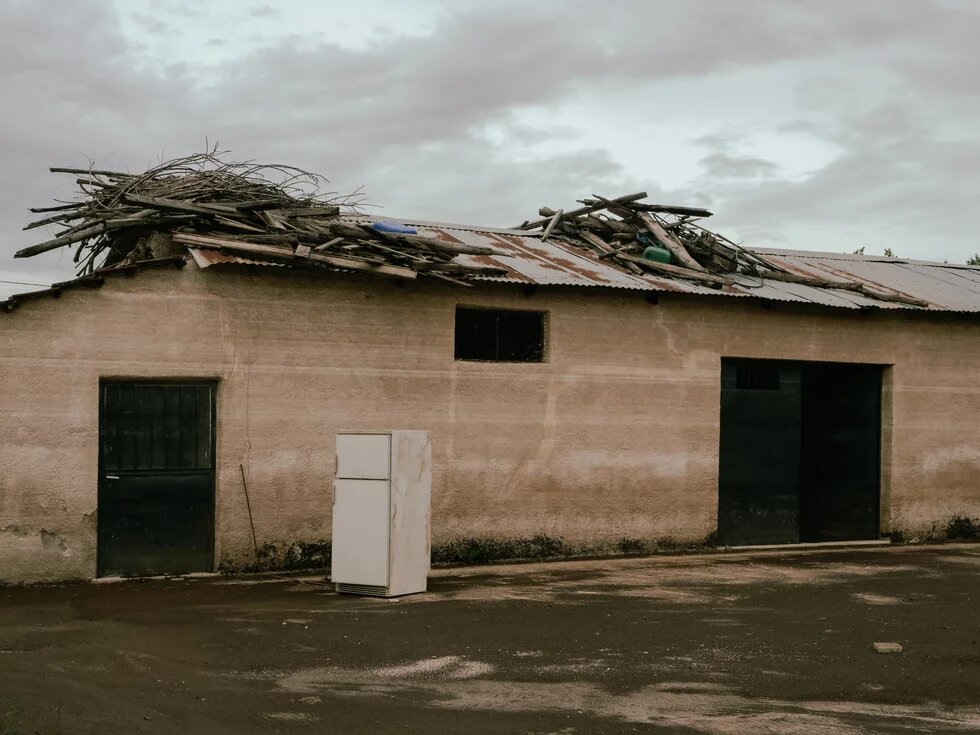
|
| One evening, we stopped at a hill overlooking the plains. Families were flying kites near the ruins of their homes, the kites silhouetted against the glowing horizon. The image evoked thoughts of Icarus, drawn to the sun despite its dangers – just as humanity seems irresistibly drawn to a lifestyle that strains the planet’s fragile limits. Like so many moments on this journey, this scene could be interpreted in different ways: as a warning or as a promise. |
| As we continued eastward, moving from the flood-ravaged landscapes of Thessaly to the fire-scarred forests of Evros, we reflected on the tension within human behavior. In the immediacy of disaster, people show remarkable adaptability and resilience. Yet in times of stability, when we have the resources and clarity to act, we often resist the changes that could prevent future crises. The moment of stability between disasters is when we have the greatest opportunity to act, yet it so often lulls us into complacency. |
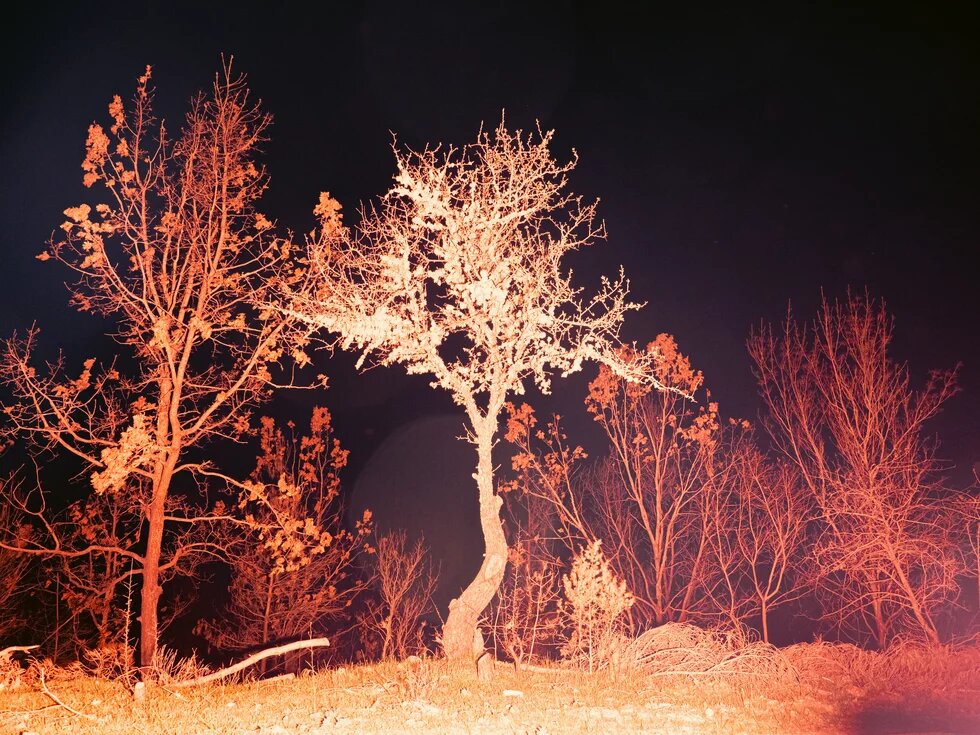
|
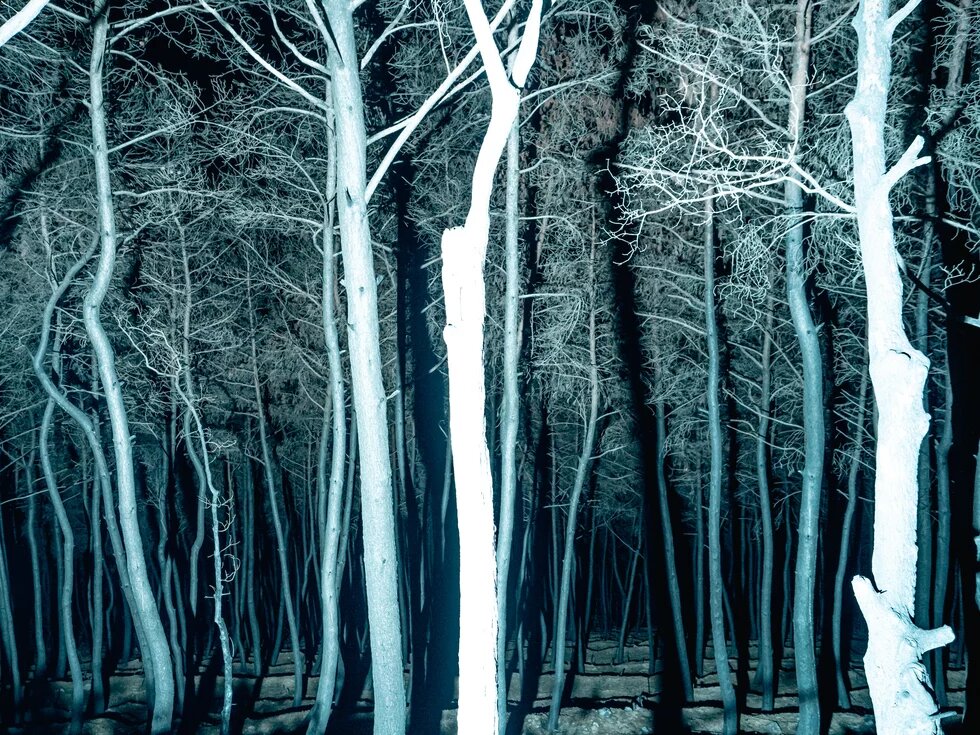
|
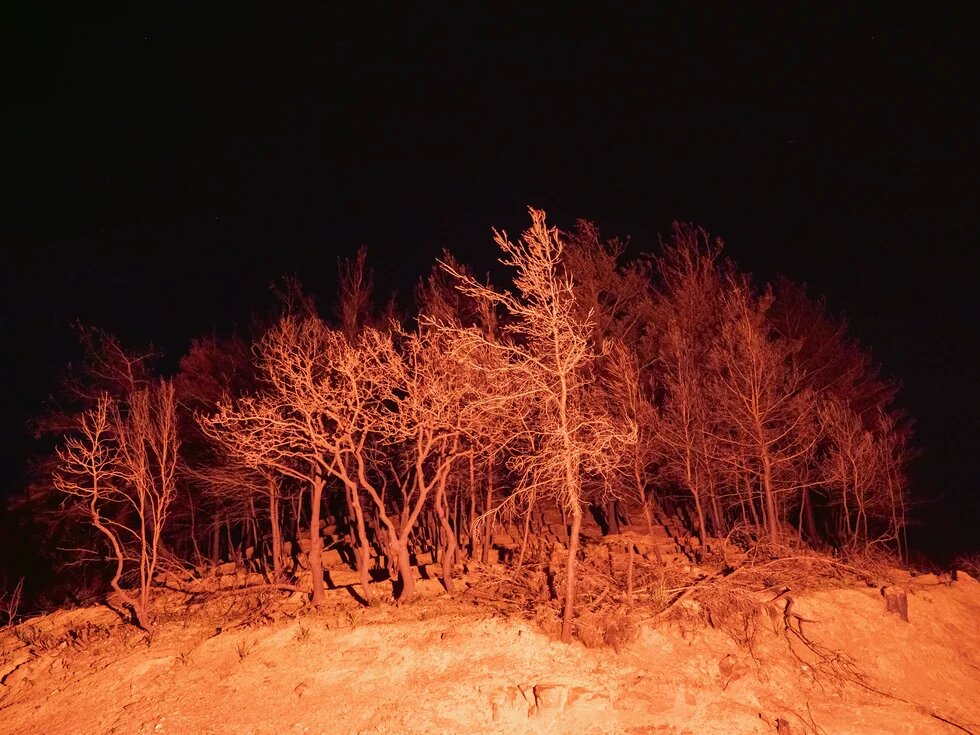
|
| In the forests of Evros, a forester explained how fires are both a natural part of the ecosystem and a destructive force. “The pinecones open in the heat, releasing their seeds,” he told us, “and the ash enriches the soil.” Nearby, a beekeeper showed us flowers blooming amid the charred ground. “The bees are louder now,” he said, smiling. Their hum, he explained, reflected their productivity and health. These moments reveal nature’s cycles of destruction and renewal, where even ashes bear the promise of regeneration. Yet they also underscore the delicate balance we so often disrupt. |
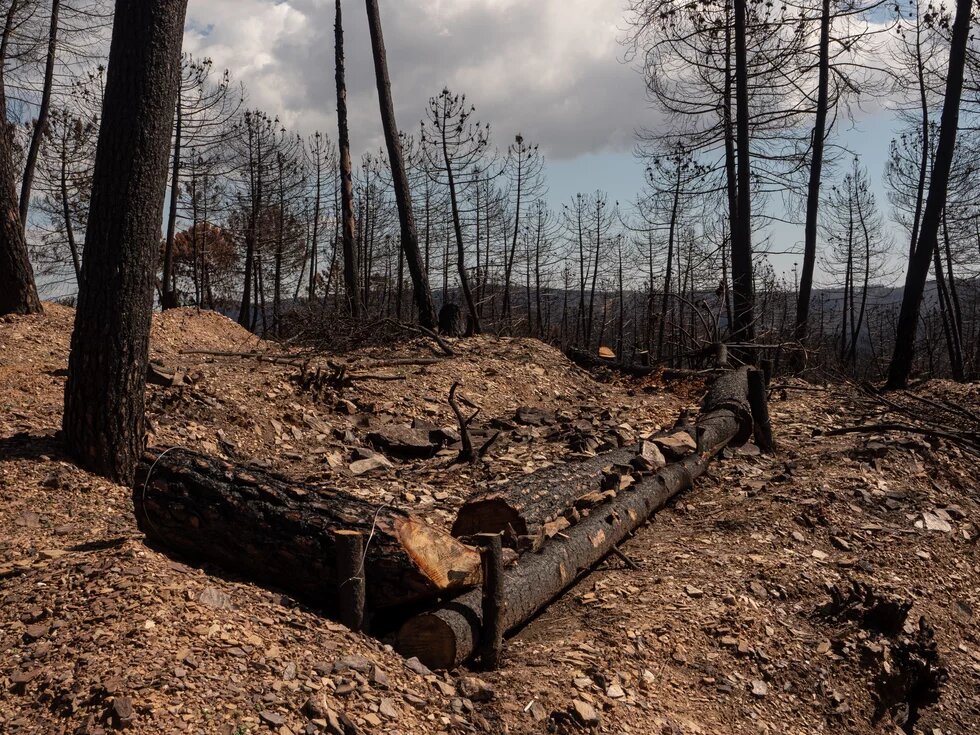
|

|
| In a nearby village, evacuated during the fires, we sat in a café where elderly men and women gathered over coffee and biscuits. A young woman from the Red Cross accompanied us, introducing us to the villagers. The clinking of spoons against porcelain mingled with low murmurs of conversation. Among the chatter were conspiracy theories: refugees had set the forest on fire; corporations wanted to clear the land; the Turkish military had ignited the flames so that they could invade. In the aftermath of a crisis, people seem to search for meaning, even if that meaning is rooted in fear and suspicion. |
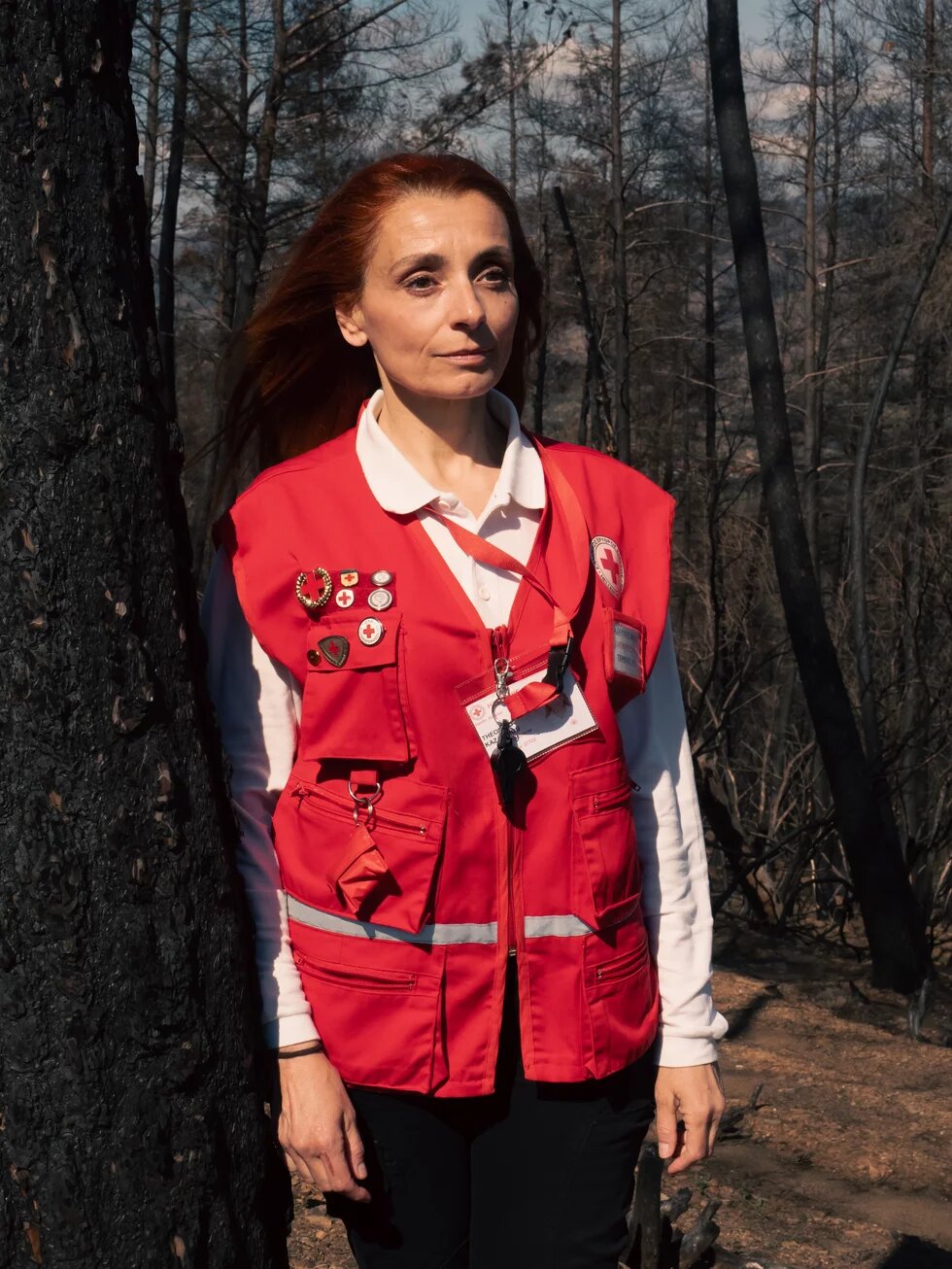
|
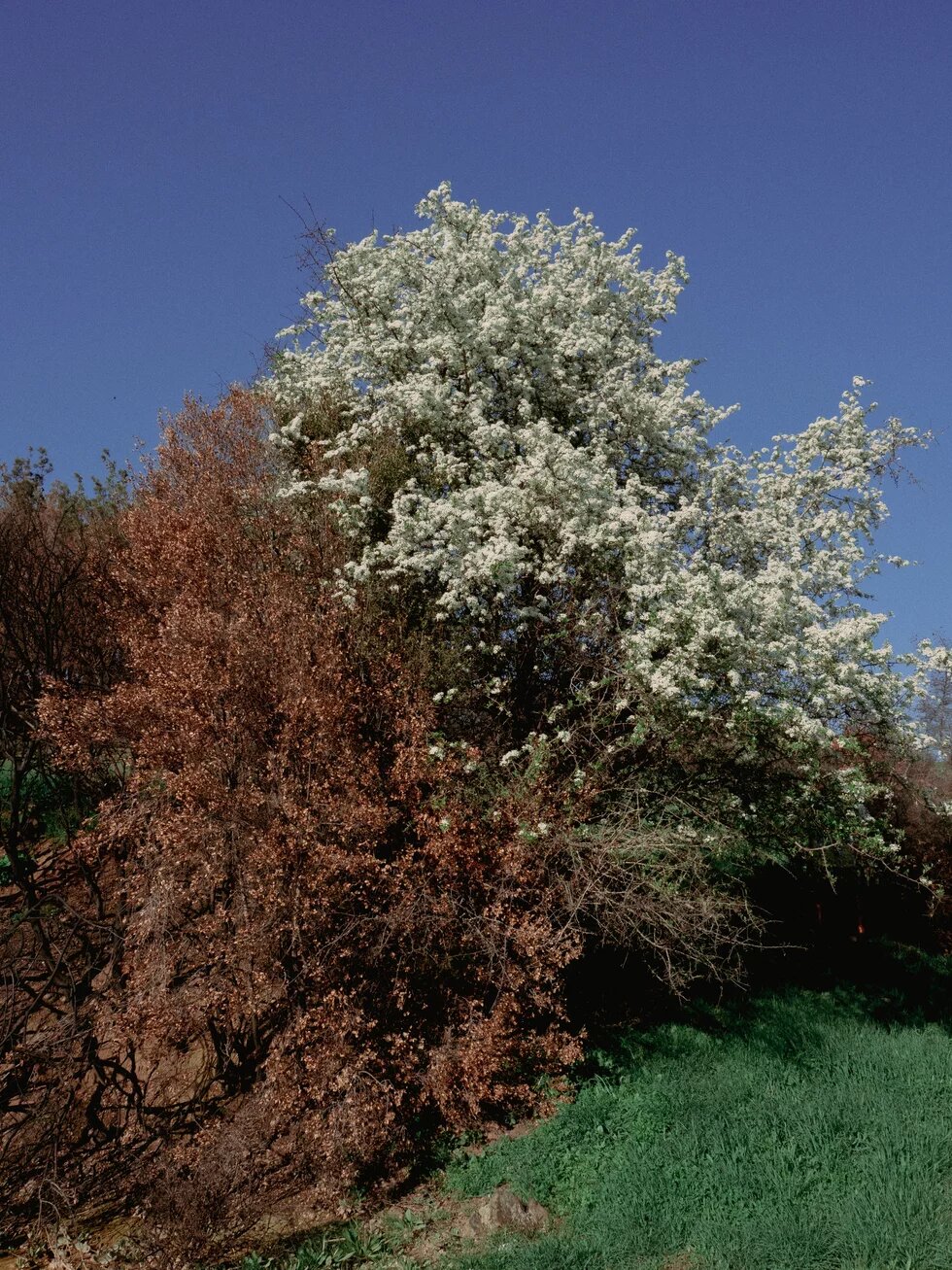
|
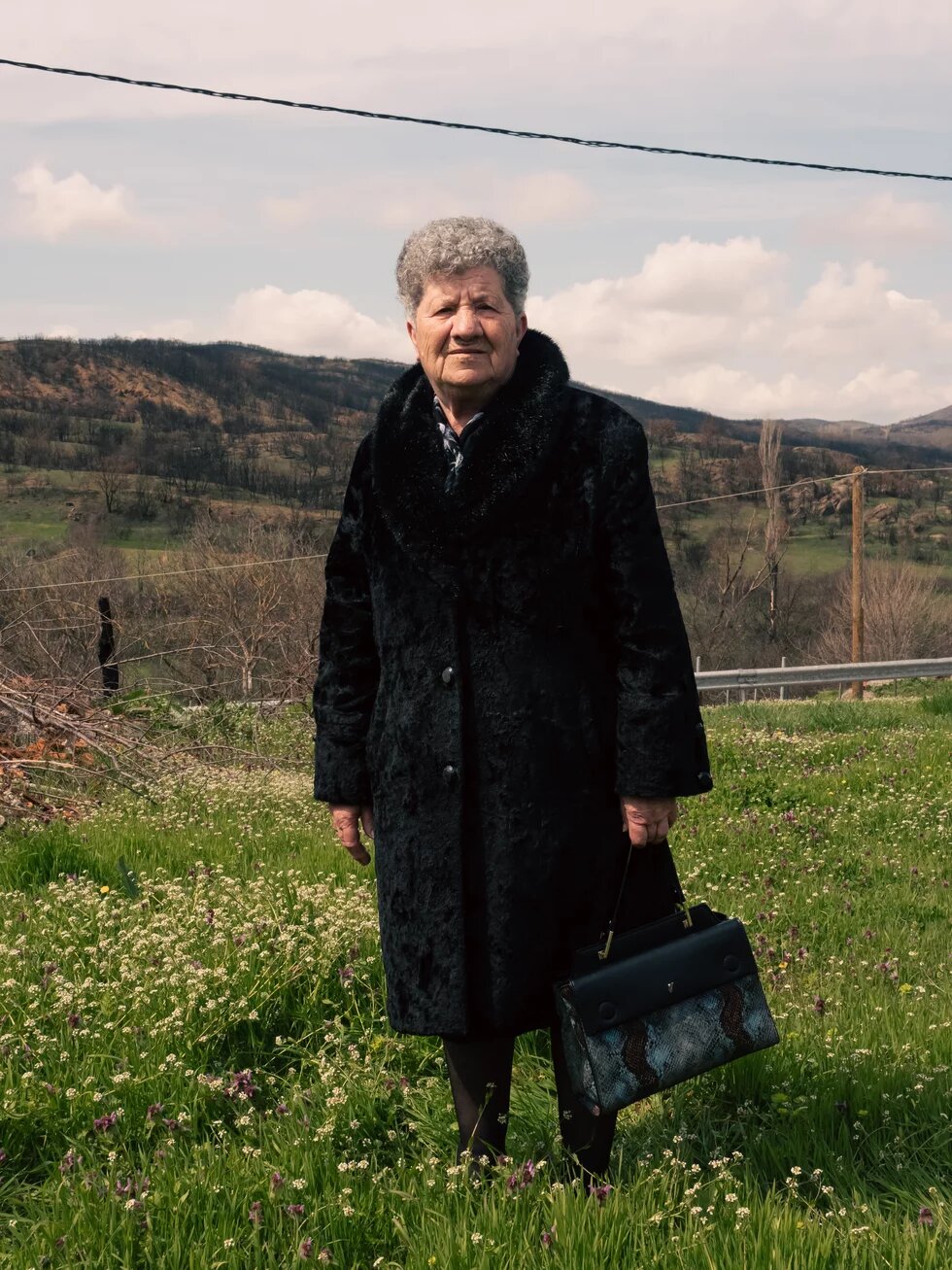
|
| As we walked through the village, I imagined how the view from the windows must have changed. Where residents once looked out onto a vibrant forest, they now saw only the blackened skeletons of trees stretching starkly into the sky. At the edges of the village, some houses bore yellow Xs – marks that indicated the buildings were no longer safe to inhabit. Yet these symbols seemed to carry a deeper meaning: silent reminders of fragility, of what had been lost. Among the ruins, we encountered a woman watering roses in her garden, the house behind her reduced to ashes. What does it say about the human spirit that, even in the face of devastation, we choose to nurture beauty? |
| A few days later, on Rhodes, we walked along a beach where fires had swept through. Shards of broken plates and other dishes glinted in the sand. At first glance, the fragments evoked the joyous chaos of Bouzoukia nights, where plates are shattered in celebration. But here, they told a story of destruction. Set against the backdrop of blackened dunes and a golden sea, the pieces glittered like remnants of a vanished world. They made us reflect on how quickly abundance can turn to despair, how moments of joy can be reshaped into echoes of devastation. |
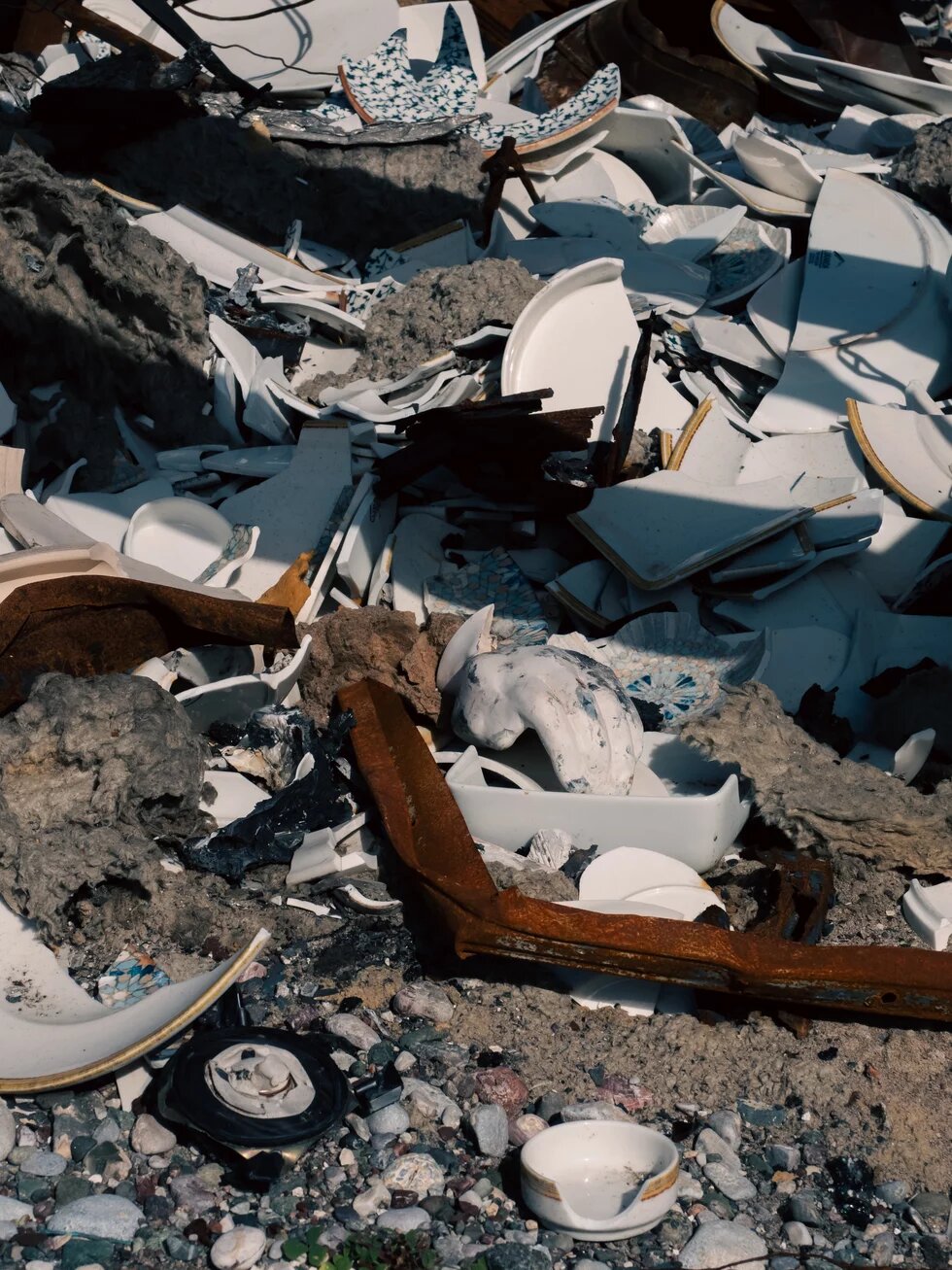
|
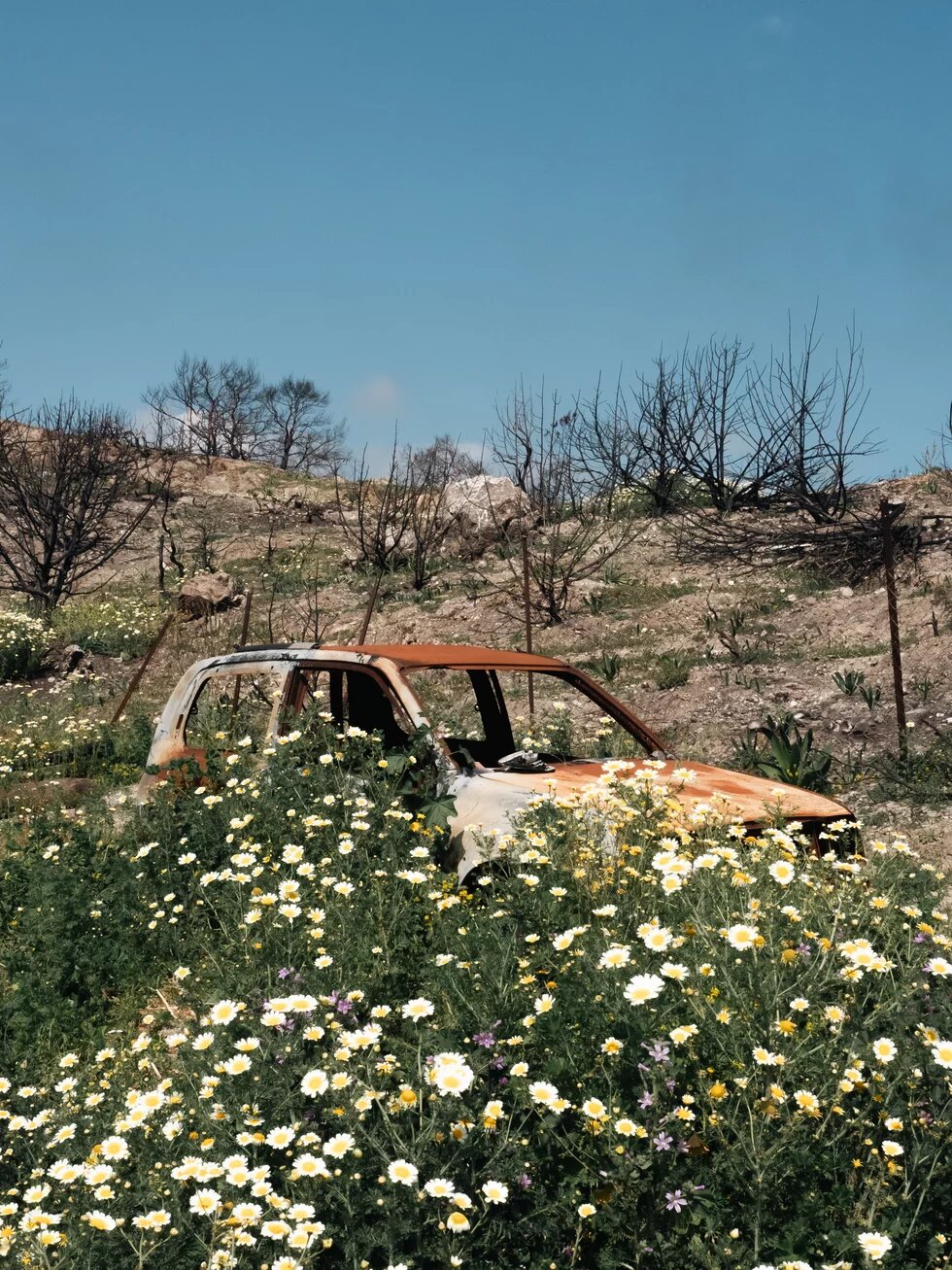
|
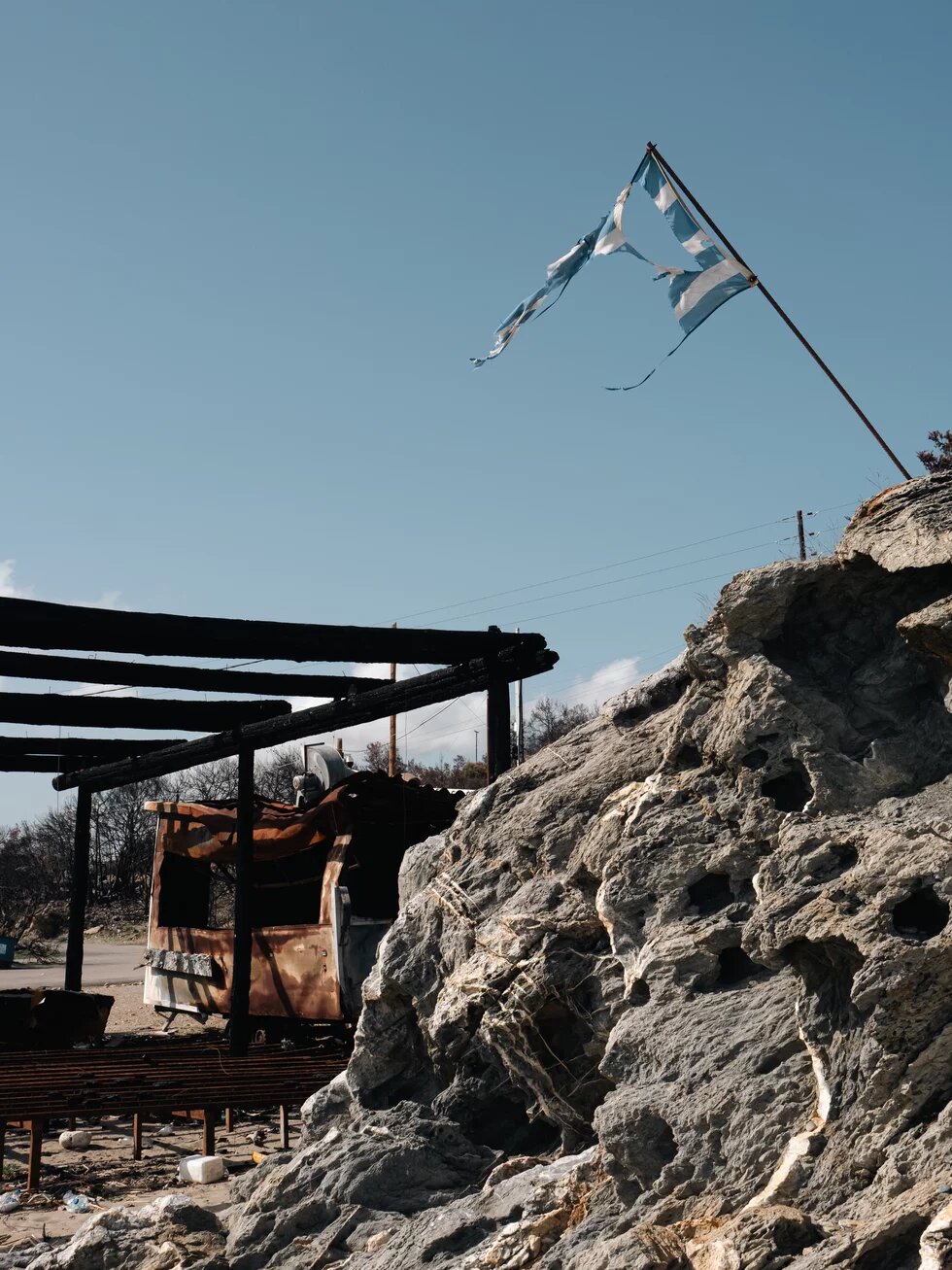
|
| In the hills, we met an elderly man planting olive trees. A retired teacher, he worked methodically, watering young saplings that would take years to bear fruit. “Not everything is for us to harvest,” he said. “Some has to be left for the birds.” His actions felt like another hopeful gesture – a quiet defiance against destruction, a small offering to the future. |
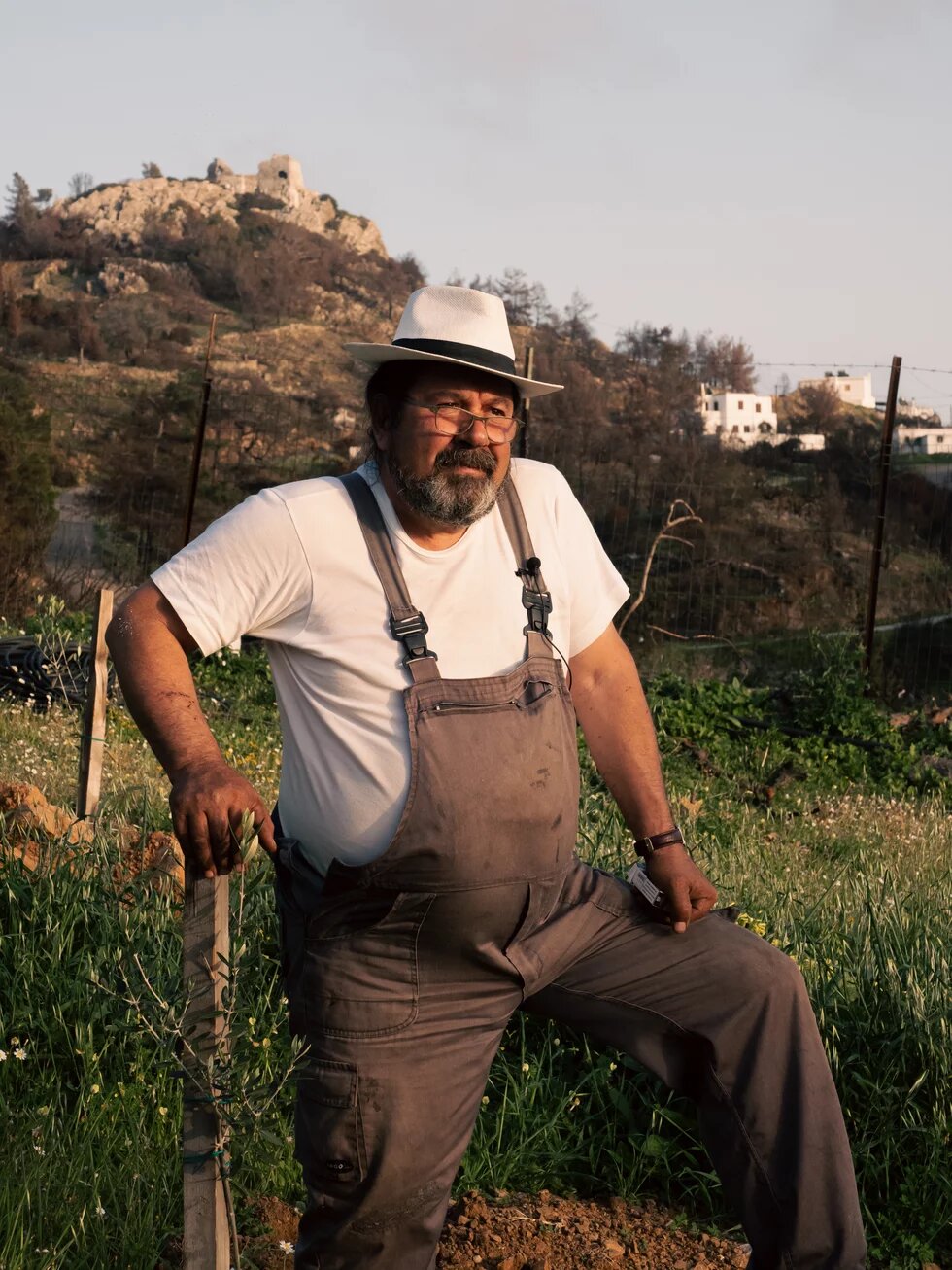
|
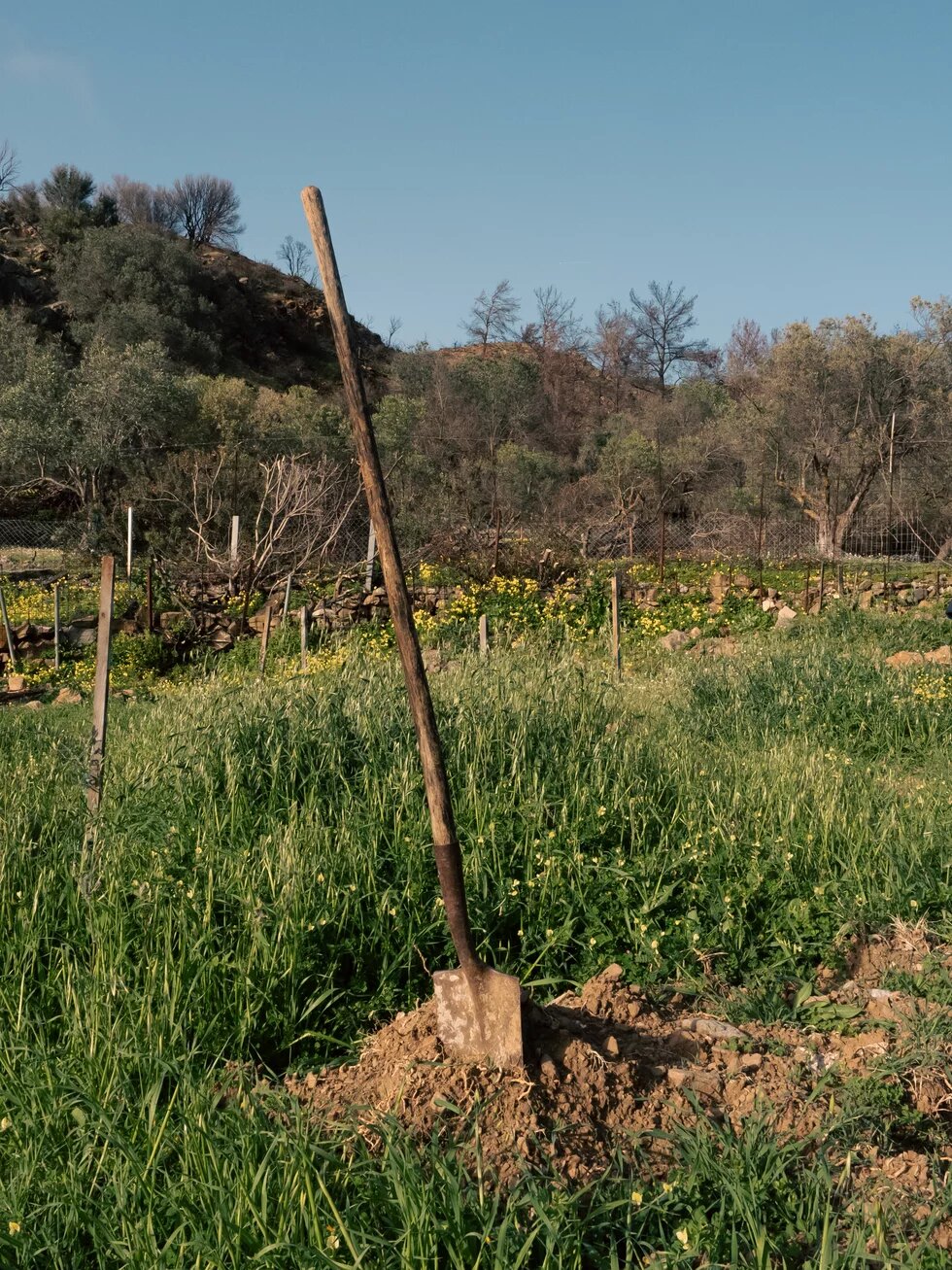
|
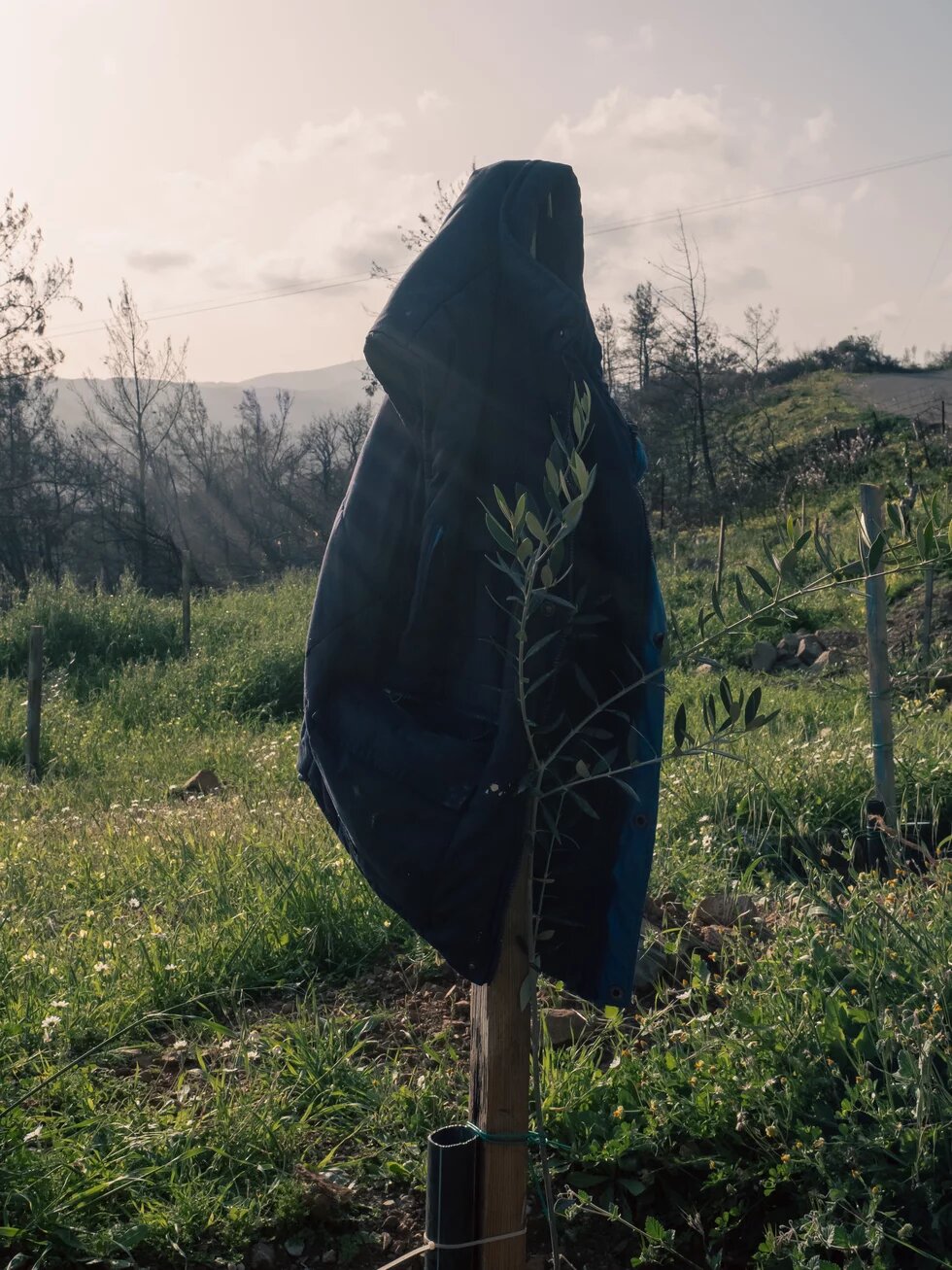
|
| By the time we began our journey, the visible scars of catastrophe had already been cleared away. Streets were swept, houses repainted, debris removed. What lingered were the invisible aftermaths and the looming threat of what may yet come. As reporters, we can hardly capture this unseen reality. Yet through the scenes we documented, the stories we shared, and the quiet acts of hope we witnessed, we pieced together fragments of an answer to destruction - both past and impending. These fragments reveal something essential about the human spirit: in the face of loss, people summon strengths they never knew they possessed, finding ways to rebuild and connect. |
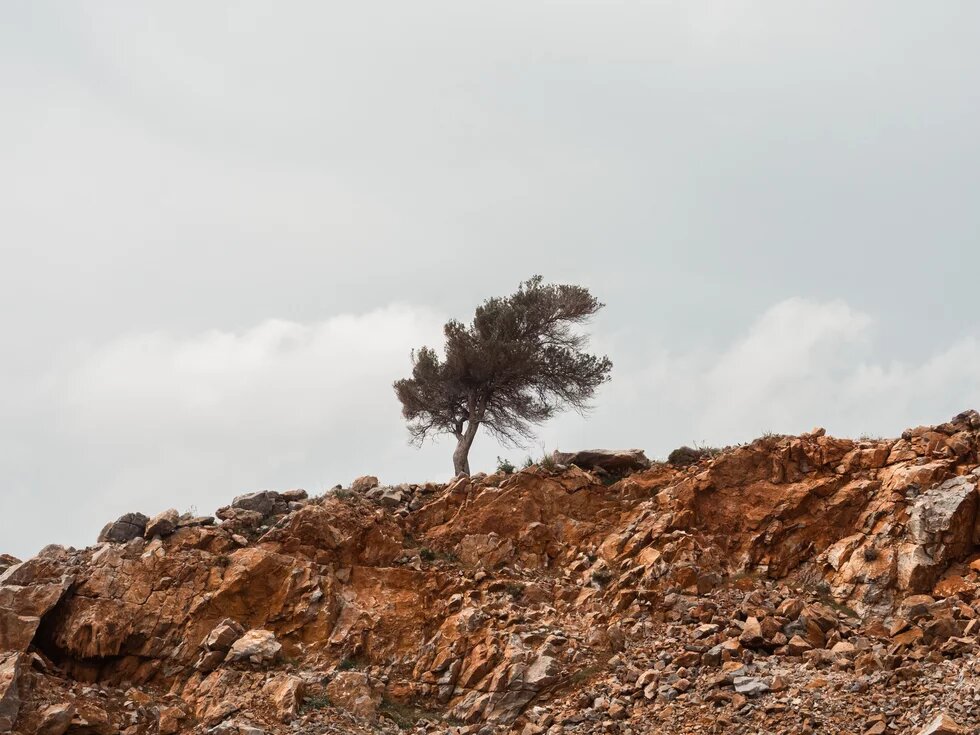
|

|
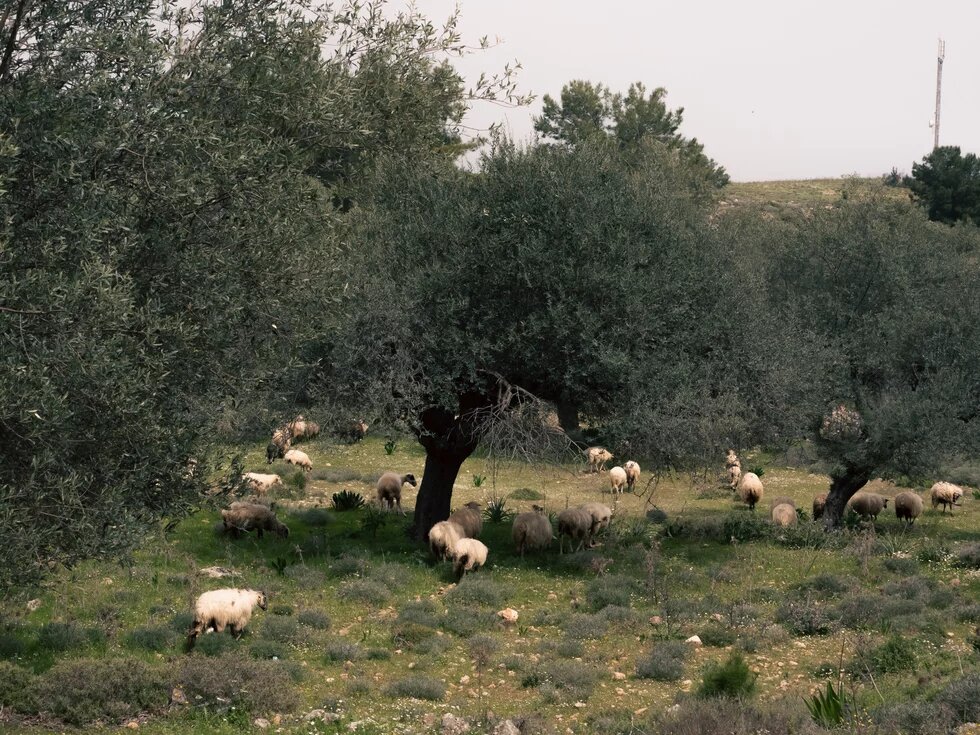
|
| Catastrophe, for all its suffering, also drives transformation, compelling us to adapt, rebuild, and forge solidarity. Perhaps recognizing this duality means confronting a deeper question: whether embracing catastrophe as an integral part of existence might unlock its potential for resilience and renewal – or whether such acceptance risks becoming a quiet surrender to the inevitability of destruction. |
© Heinrich-Böll-Stiftung e.V.
Schumannstraße 8
10117 Berlin
T +49 (30) 285 34-0
F +49 (30) 285 34-109
www.boell.de
info@boell.de